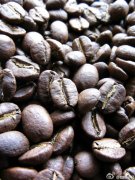Basic knowledge of Coffee making Coffee Grinding equipment

There are various brands and models of bean grinders, and a grinder that can adjust the thickness of ground beans is ideal. When grinding with a bean grinder, don't grind too much at a time, just enough for one use. Because the longer the grinder is used, the easier it is to generate heat, which indirectly causes the coffee beans to be heated and causes the aroma to be lost, thus affecting the aroma of coffee.
Coffee beans contain oil Lu, so the bean grinder must be cleaned after grinding, otherwise the oil deposits, there will be stale smell for a long time, even if it is more advanced beans, it has been ground into strange powder. After each use of the bean grinder, be sure to wipe the blade machine with wet wipes and clean the plastic top cover with warm water. However, special attention should be paid to the popular flavored coffee in the United States. The flavor added is strong and heavy, and will remain for a long time. Therefore, it is best to put two spoonfuls of white sugar into the flavor before washing. Of course, it is best to grind only the same kind of beans in a grinder, so that there is no problem of mixing flavors.
(i) Propeller type bean grinder
This grinder uses a motor to turn propeller-type blades to grind coffee beans into powder. Coffee beans are chopped up and lose a lot of flavor. Therefore, this kind of propeller grinder is not commonly used. However, because it is cheap, small and does not take up space, some homes and offices will still be used frequently. Propeller-type bean grinder mainly has the following disadvantages:
1. High temperature is formed during grinding
Compared with other bean grinders, this bean grinder has the fastest speed and is easy to form high temperatures after high speed friction with coffee beans. However, aromatic substances have low boiling points, so the aroma of coffee will be lost in the high temperature of the grinding process, which will make coffee lose color.
2. Uneven grinding
This kind of grinding opportunity will chop the coffee beans, and the powder formed is either too coarse or too fine (too fine coffee powder will produce bitterness), which is difficult to be uniform. Especially in a large number of grinding, often floating in the upper layer of beans, easy to produce too coarse coffee particles. This tends to form a random distribution, with a high proportion of fine and coarse particles.
In order to overcome this disadvantage, a small amount of grinding can be used, and the grinder should be held in hand, and the lid should be shaken up and down with the thumb, so that the blade can evenly cut the coffee particles.
3. Form blocks
When grinding beans, the high-speed spiral blades will make coffee powder form a vortex, but due to the centrifugal force is too large, will make too fine powder form a block, stick around, these blocks will hinder the average hot water infusion coffee, resulting in uneven extraction situation.
4, can not set the grinding degree
This kind of grinder has no grinding degree setting function, only according to grinding time to determine the grinding degree. The average grinding time is about 6-10 seconds. It is suitable for filter pots, follicular cups and stoppers. However, espresso coffee requires extremely fine grinding, which may take more than 20 seconds, at which time the temperature of friction will continuously evaporate the aroma of coffee.
5, dangerous switch design
By design, such grinders typically utilize the pressure of closing the lid to activate a switch that turns the spiral blade. When putting beans or cleaning, if you accidentally press the switch, and your finger happens to be near the blade, the consequences will be unthinkable. It is recommended that the plug should be unplugged at ordinary times, plugged in before grinding beans, and unplugged immediately after use; during processing and cleaning, the power should also be cut off. In addition, the plastic cover above can be cleaned with water, but the inside and outside of the fuselage can not be stained with water, can only be wiped with a rag.
(2) Hand-operated bean grinder
For more than 100 years, the design of hand-operated bean grinders has hardly changed, and even the latest models tend to be classical and elegant. The grinder involves turning a lever by hand and turning an iron knife inside to crack the beans into a fine powder that falls into a box below. Strictly speaking, the internal sharpener is not a knife, because it has no sharp edges or serrations, but an angled conical sharpener. It grinds the coffee beans in a crushing way, similar to the ancient mortar and pestle, which also best retains the aroma of coffee.
Although it is a bit hard to use the hand grinder, and the speed is not fast, it can grind the coffee powder with uniform particles, and the friction temperature during grinding is the lowest, which is not easy to destroy the delicious coffee. It is very suitable for drip filtration and drip brewing methods. In addition, hand-operated grinders cause the least noise and have always been a favorite of coffee brewers.
Hand-operated grinder usually has a circular knob between the rocker and the main body, which can grind fine coffee powder downward. This grinder can grind moderate to fine coffee powder, but it is impossible to grind very fine powder particles, so it is not suitable for grinding espresso coffee powder.
(3) Sawtooth type bean grinder
Sawtooth grinder can quickly and stably grind out uniform coffee powder, but the price is higher.
The operation of this bean grinder is quite simple, as long as you follow the instructions on the manual, you can easily use it. Generally speaking, it has two setting functions, one is the grinding degree setting, and the other is the grinding time setting. Abrasion is mostly represented by Arabic numerals, the smaller the number, the finer the grinding. Some more clearly indicate the grinding range of each brewing method. For example, Filter, Espresso, etc. Filter range is suitable for drip and follicular brewing methods;Espresso is suitable for espresso, and the instructions will also specify the application of various grinds.
The grinder has a funnel-shaped container above it for unground beans. The longer the time is set, the more beans will fall into the grinder, and the more coffee powder will naturally be ground. Because the preservation effect of the container is not good, it is recommended to drink as much as possible, and drink it after grinding. Other beans can be stored in vacuum jars or crisper bags until they are ground again.
1. Types of serrated bean grinder
There are two types of sharpeners for saw-tooth grinding machines: one is a planar saw-tooth knife; the other is a three-dimensional conical saw-tooth knife.
(1)flat saw blade
The flat model consists of two circular blades with sharp serrations on the circumference. After activation, coffee beans are brought between the blades and instantly cut and crushed into fine particles. As far as household appliances are concerned, the flat saw grinder is closest to the large commercial grinder, similar to the grinder in the coffee shop.
(2)Three-dimensional tapered serrated knife
The conical bean grinder consists of two conical irons, the surface of which is covered with serrations. The gap between the two irons is where the coffee beans are ground into powder. Tapered serrated knife produced the lowest friction temperature, but also the most uniform grinding. Both commercial and manual bean grinders use tapered serrated knives.
2. Precautions for purchasing saw-tooth bean grinder
The higher power grinder, the faster grinding speed, the shorter the coffee powder stays in the sawteeth, and the low temperature coffee can be ground. General grinding machine power between 70 watts to 150 watts, the higher the power the better.
Some coffee grinders grind poorly, and the coffee powder is not fine enough. When brewing espresso coffee, the extraction is insufficient, making the finished product tasteless, so for grinding espresso coffee, special attention should be paid to the precision of the grinder to ensure that it can grind out uniform and fine coffee powder, so as to brew good coffee.
Important Notice :
前街咖啡 FrontStreet Coffee has moved to new addredd:
FrontStreet Coffee Address: 315,Donghua East Road,GuangZhou
Tel:020 38364473
- Prev

Coffee grinding process
In general, a good grinding method should include the following four basic principles: 1, the grinding degree suitable for the brewing method should be selected; 2, the temperature of the cattle produced during grinding should be low; 3, the powder after grinding should be uniform; 4, grinding before brewing. No matter what kind of grinding machine is used, it will certainly generate heat by friction during operation. Most of the fine substances are highly volatile,
- Next

Roasting determines the light taste of coffee.
Generally speaking, each coffee cherry contains two raw beans, and the fragrance is still hidden, waiting to be discovered. In raw beans, it contains a lot of chloric acid. As the baking process, chloric acid will gradually disappear, releasing familiar and pleasant fruit acid-such as acetic acid, citric acid, malic acid in wine. Baking is just right, it can present these beautiful sour taste moderately; on the contrary,
Related
- Beginners will see the "Coffee pull flower" guide!
- What is the difference between ice blog purified milk and ordinary milk coffee?
- Why is the Philippines the largest producer of crops in Liberia?
- For coffee extraction, should the fine powder be retained?
- How does extracted espresso fill pressed powder? How much strength does it take to press the powder?
- How to make jasmine cold extract coffee? Is the jasmine + latte good?
- Will this little toy really make the coffee taste better? How does Lily Drip affect coffee extraction?
- Will the action of slapping the filter cup also affect coffee extraction?
- What's the difference between powder-to-water ratio and powder-to-liquid ratio?
- What is the Ethiopian local species? What does it have to do with Heirloom native species?

